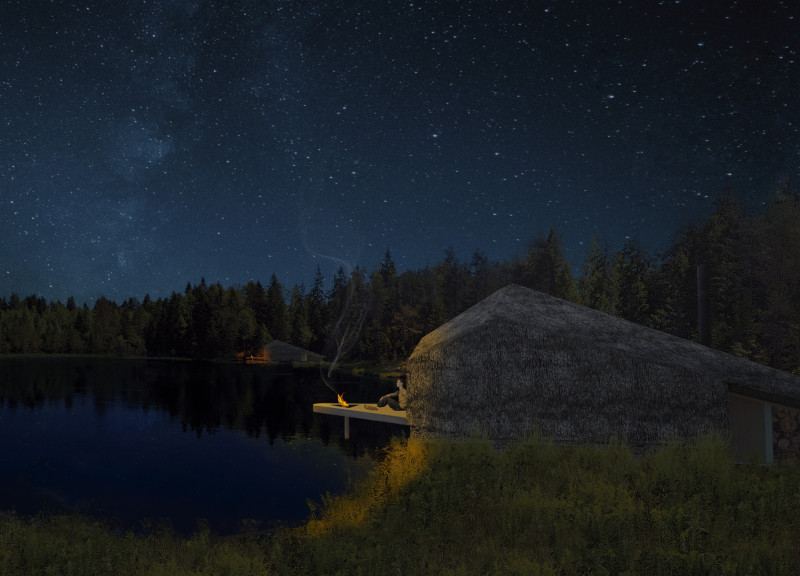5 key facts about this project
Set in the quiet expanse of the Latvian forest, the meditation cabin serves as a space for reflection and calm. The design concept focuses on connecting the built environment with nature, creating an inviting atmosphere that encourages mindfulness. This cabin aims to provide a retreat from the fast-paced modern world by offering a simple, yet thoughtful place for personal solace.
Historical Context
The design reflects ideas from historical architecture, especially the notion of protection as proposed by Vitruvius. Instead of complex forms, it takes inspiration from nature, manifesting a structure that resembles trees. This choice fosters a sense of belonging within the forest, allowing the cabin to function as both a shelter and a part of its natural surroundings.
Materiality
A significant feature is the thatched roof, which serves both practical and cultural purposes. This traditional material provides insulation, which is essential for comfort in different weather conditions. The roof's soft shape blends with the forest, making the cabin feel less like an intrusion and more like a natural extension of the landscape. This connection to local building practices emphasizes the idea that architecture can coexist with nature.
Spatial Organization
The cabin’s layout is designed to provide clear areas for meditation, rest, and essential functions. Each space is thoughtfully defined to support specific activities while promoting relaxation. This separation helps create a peaceful atmosphere conducive to deep reflection. Practicality does not compete with the sense of solitude; rather, it enhances the overall experience for those inside.
Adaptability and Interaction
The design also considers the diverse topography of the Latvian forest, allowing the cabin to adapt whether it is surrounded by dense trees, situated in an open area, or located near a lake. This flexibility ensures that the cabin maintains its connection with nature and that users can interact with their environment in different ways.
The entrance features a series of folding doors that can fully open, inviting the outdoor environment into the living space. This design choice encourages a continuous transition between inside and outside, enhancing the overall sensory experience of being in nature.





















































